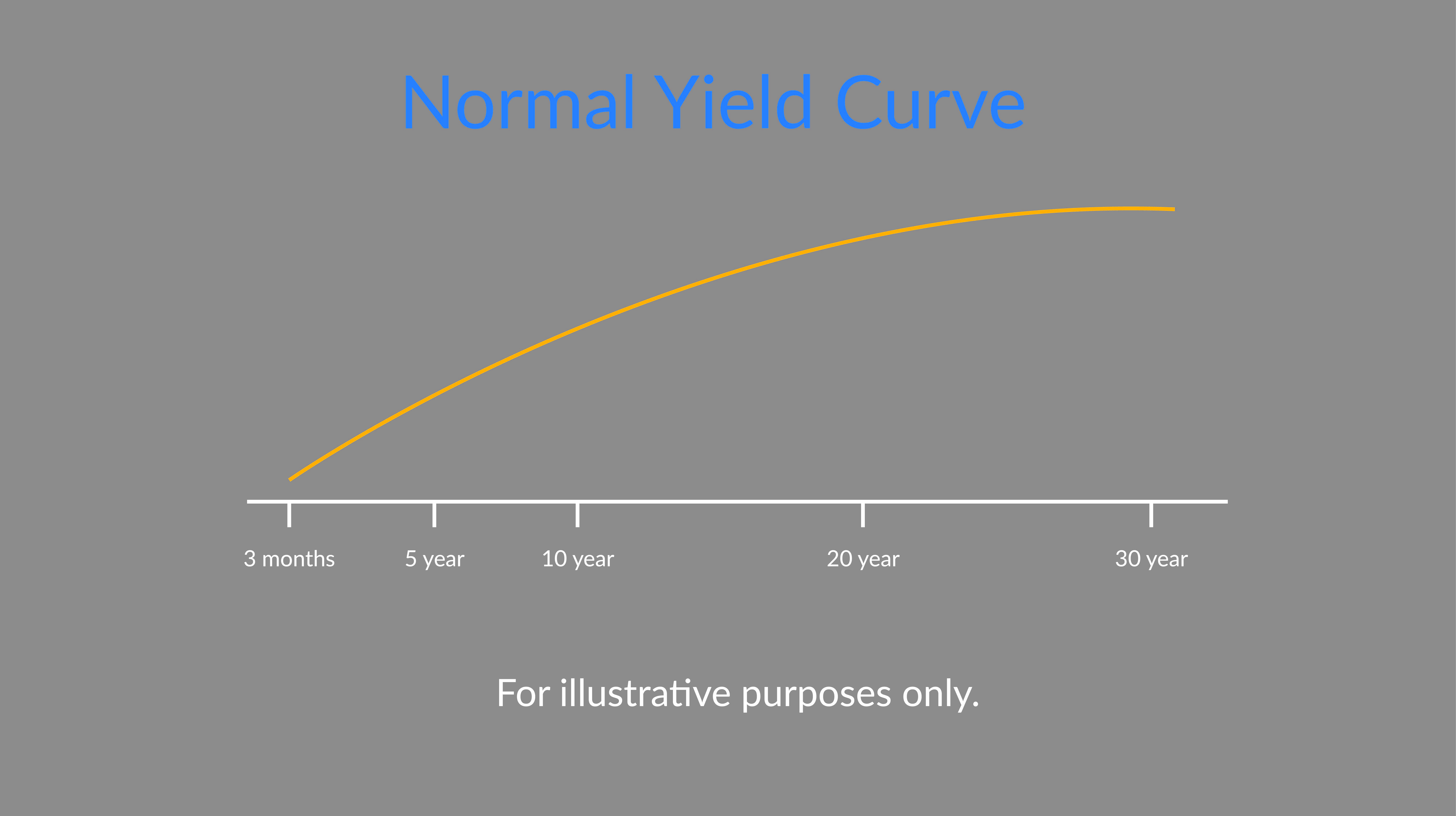Is a recession imminent? Upside Avenue CEO Yuen Yung shares how understanding the U.S. Treasury yield curve can help you make sure your portfolio is ready for a downturn
You’ve heard all of the tensions economists and analysts have over the inverted yield curve, but does that mean for your investments? In this post, I’ll share with you about what the yield curve can tell us about the health of our economy and what you can expect in terms of investment returns.
What is a yield curve?
A yield curve is a way to gauge how bond investors feel about risk. Plotted out on a graph, the yield curve maps out the returns (yield) on U.S. Treasury bonds over a period of years.
On a normal yield curve, the chart would show lower returns for short-term bonds and higher returns for long-term bonds, like this:

Notice how the chart curves upward, with the 3-month bonds yielding the lowest returns and 30-year bonds yielding the highest returns.
How the yield curve changes
The shape and direction of the yield curve typically signal what investors’ sentiments are for the future. So if the yield curve is trending upward, the general economic outlook is positive.
Sometimes the yield curve flattens. It can actually stay flat for a while, which is what we are experiencing right now. It means long-term investments and short-term investments are all worth about the same and indicates that we don’t feel that great about the future.
When the yield curve actually does invert, it means the optimism is not there for the future and we think that bad times are ahead. There’s empirical data that shows that the yield curve, when it inverts, has predicted pretty much 90 percent of every recession that’s ever happened (recession periods are marked in gray):
This is the reason everyone pays attention to the yield curve – an inversion likely means a recession is on the horizon.
Are we headed for a recession?
Yield curves can shift very quickly. We’ve seen yield curves flatten, invert a little bit, go back to flat, and then tip back up toward normal, so you really just don’t know. If the yield curve really starts turning downward and stays that way, then you know the uncertainty is sticking around and we’re likely headed toward a recession.
Recessions almost follow a yield curve inversion naturally. They are like self-fulfilling prophesies because if nobody feels like things are going to go well, then investors stop buying, consumers stop spending and it creates its own recession anyway.
How does the yield curve affect the stock market?
While the yield curve measures expected returns for U.S. Treasury bonds, an inverted yield curve can affect the stock market too. The yield curve informs the stock market about optimism and earnings potentials.
The stock market is driven by beliefs about what the earnings are going to be in the future and then trying to discount that value back to today. We call this the price-to-earnings ratio, or P/E ratio, and it indicates whether investors are anticipating growth in a company’s future. It’s why, for example, a company’s stocks will trade for 25 times their current earnings. When the yield curve does what it does, then the market’s going to react by saying, “Maybe we need to price our valuation differently.” As a result, stock prices start going down when the yield curve inverts. The stock market is reacting to the projection on revenue growth indicated by the yield curve.
How do I prepare for a recession?
In this climate of uncertainty, you have to play more defensively. So, if you’re looking at your portfolio and you’re seeing signals that a recession might be coming because of an inverted yield curve, then you need to start thinking about “How do I protect my portfolio?”
If you believe that a recession IS coming, and you’re looking for more recession-proof type investment, then real estate works well. Real estate happens to be one of the best recession-resistant investments because real estate holds its value consistently over time.
What’s the best real estate investment for a recession?
Within real estate, you have four major food groups: office, industrial, retail, and housing. Housing is probably the strongest through a recession of the four groups. The other three are a little bit more dependent on the economy.
For example, if businesses aren’t doing well, then they’re laying off people and they don’t need as much office space. When retail’s not doing well, they can’t afford to continue renting their space. Recessions usually spark a slowdown in manufacturing, too, so space isn’t in as much demand. But you always need housing.
What kind of housing makes the best investment?
Within housing, you have the option of single-family or multifamily. Within the residential category, apartments tend to be the most recession-proof asset.
Multifamily is particularly strong during recessions because it’s like having 100s of single-family houses put together, so you’re diversified inside of the property itself. There is also an increase in demand for multifamily during a recession. The demand for renting increases during difficult economic times because the opportunity to get a mortgage decreases.
An easy way to protect your portfolio through real estate
You can recession-proof your portfolio in real estate in a matter of minutes. The Upside Avenue REIT allows you to generate passive income from a diversified multifamily real estate portfolio for a minimum investment of $2,000.
For more information on how to get started in real estate investing in the Sunbelt region, click here or call 512-492-8882. Questions? Email hello@upsideavenue.com 24/7.

